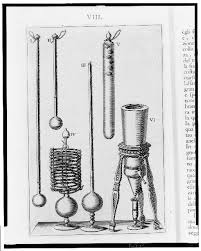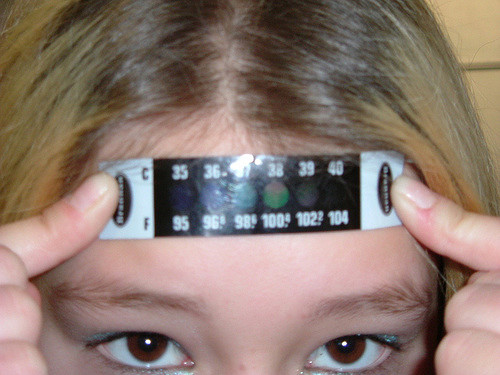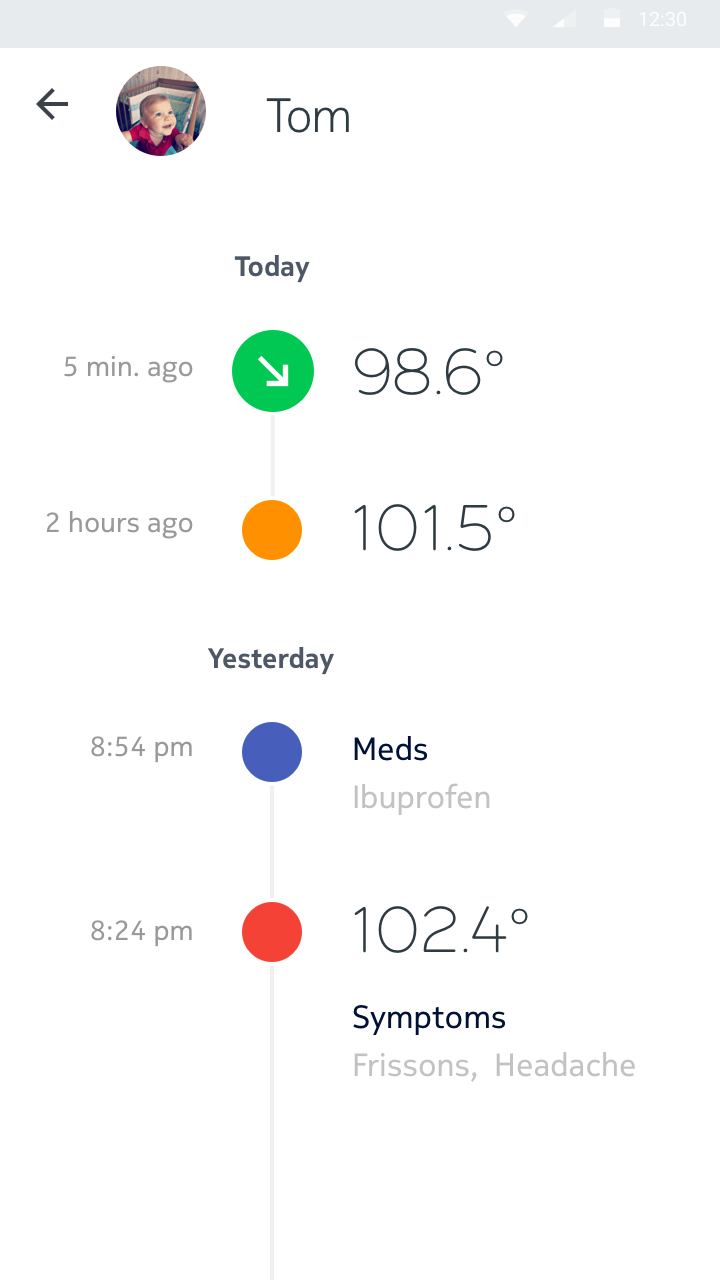
In this day and age, most of us keep a thermometer in our medicine cabinet, and with cold and flu season just around the corner, it’s the ultimate device for proving that we’re simply too sick to go into work or school. But have you ever wondered where the thermometer got its start? Read on to find out.

The very first tools for measuring temperature—apart from using the back of your hand—were known as thermoscopes. While multiple inventors, including Galileo Galilei, developed their own versions at the same time, the first man to add a numerical scale to the device was Santorio Santorio. According to the Oxford University Press, Santorio created multiple designs of thermometers, but they were inconsistent, and it took a long time to get an accurate reading.

Gabriel Fahrenheit was inspired by thermometers of the 1600’s, and in 1714, he succeeded in making a practical thermometer, using mercury, or quick-silver, in lieu of alcohol, which could read temperatures within a reasonable amount of time. Soon after, Hermann Boerhaave, and more specifically, his student, Anton de Haen, brought the thermometer into more popular use in the medical field, when de Haen integrated its use into his bedtime routine. He believed it to be an accurate way of determining fever, and was able to find a correlation between fever, chills, and the acceleration of the pulse. In a terrible bit of irony, Fahrenheit himself died after a sudden bout of fever in 1736.

However, the thermometer didn’t gain mainstream acceptance in the medical field until 1868, when Carl Wunderlich published a study that helped define the healthy range of temperatures for humans. His measurements took twenty minutes to complete and were taken on a foot-long thermometer inserted under the axilla—don’t worry, that’s just a fancy way of saying armpit—which made it difficult to incorporate the thermometer into the modern home. Luckily, two years earlier, Thomas Clifford Albutt had designed a portable thermometer that could read a person’s temperature in only five minutes, which brings us into the age of the modern clinical thermometer.
In modern medicine, there are three main types of thermometer: oral (mouth), axillary (armpit) and, of course, the dreaded rectal. Happily, most of us would say we’ve never been subjugated to a rectal thermometer, but chances are we have—we just don’t remember it. When it comes to taking temperatures for infants, babies, and toddlers, a rectal thermometer is often more accurate than oral and axillary thermometers.
Luckily—though they often seem to be forgotten—there are two other types of thermometers. The first, the tympanic thermometer, was developed in 1964 by Theodor H. Benzinger and later evolved with the use of infrared technology by David Philips in 1984. A tympanic thermometer can be inserted into the ear canal to record the infrared radiation emitted, which is then converted into a temperature reading.
The second is the forehead thermometer. Invented in the 1990s, there are two different types of forehead thermometers. The first is a small plastic strip embedded with liquid crystals, that will change colors after being pressed against the patient’s skin for a specified period of time.

The other, slightly more high-tech version, is similar to the tympanic thermometer in that it converts infrared radiation emissions to produce a temperature reading. However, in lieu of being placed in the ear, it can be pressed directly to the forehead.
Nowadays, the majority of adults use an oral or tympanic reading when taking their temperature. While mercury thermometers (not the safest of choices) are still in use here and there, digital thermometers have become much more widely accepted.
As technology has progressed, more options have become available that are quicker, more accurate, and less invasive. For example, the Withings connected thermometer, Thermo, launched in 2016, can take a highly-accurate temperature at the temporal artery using an array of 16 infrared sensors. It then offers color-coded fever feedback based on age, and all the info is automatically saved to the user’s smartphone, where the app can also offer advice.
So, the next time you start to feel a fever coming on, and pick up a thermometer, think about the four centuries of innovation that it took to bring you the convenience of a modern thermometer!



